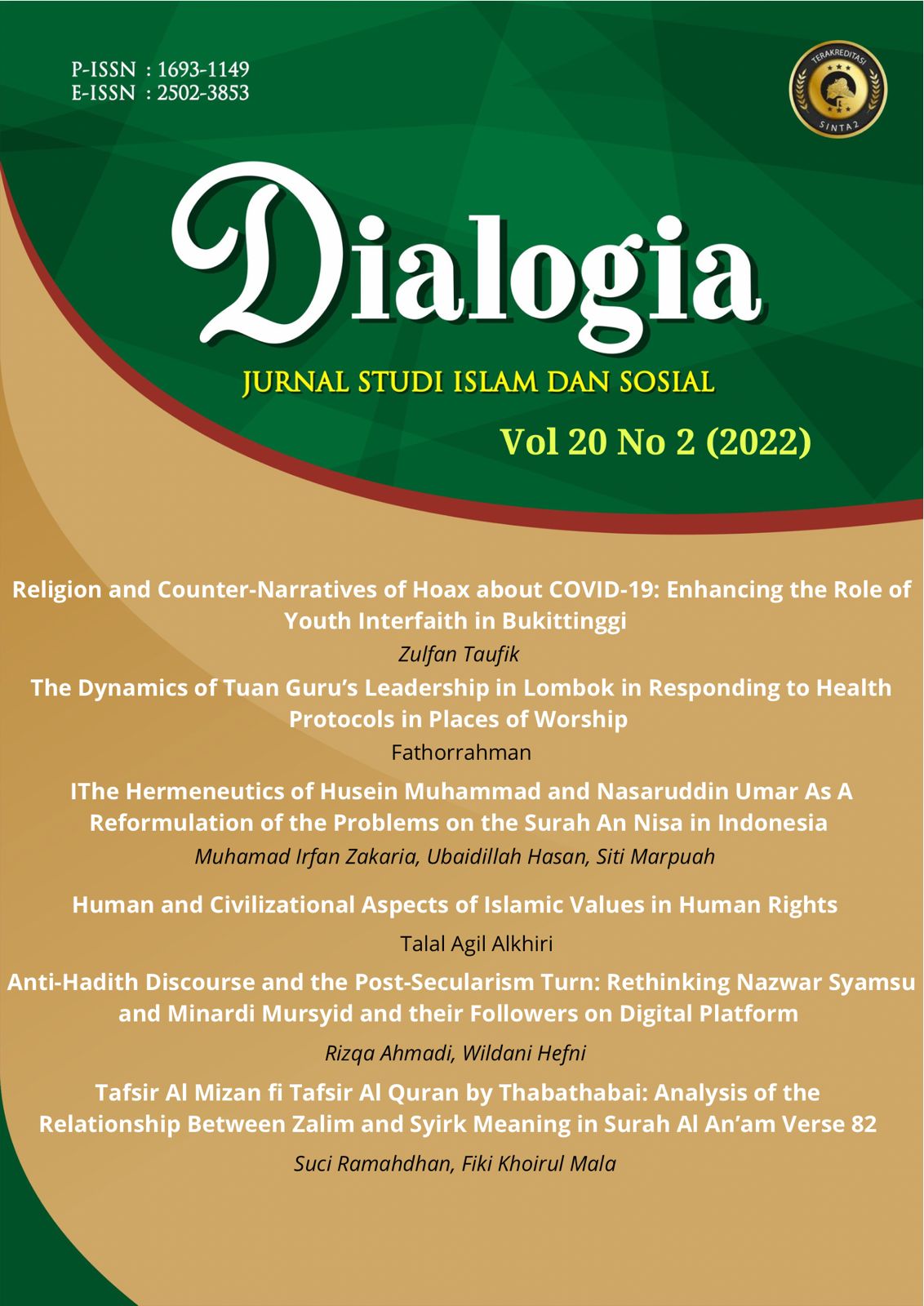Revealing Feminine and Masculine Discourses in The Qur'an
DOI:
https://doi.org/10.21154/dialogia.v20i2.5010Keywords:
feminine, masculine, balance, complementerAbstract
This research explained that the feminine character is a character related to the consideration of the heart and the nature of beauty (jamÄliyah/yin). The masculine character is a character that is related to the considerations of ratio/logic and the nature of majesty (jalÄliyah/yang). Feminine and masculine characters in the Qur'an are mutually integrated and complementary to one another and possesed by men and women. This research was qualitative research. This research used the maudlui interpretation method with a historical-critical-contextual approach. Interestingly, the verses that refered to biological meaning of humans (al-dzakar-al-untsÄ and basyar), many of them did not demonstrate the content of these characters while yet the verses that refered to social relationship (nisÄ'-rijÄl, insÄn) did. This term was related to the social role and function of the caliphate for men and women. Al Qur’an also mentioned the feminine and masculine natures of Allah's attributions. The feminine character of Allah has jamÄliyah elements such as al-rahmÄn and al-rahÄ«m. Masculine characters on the other hand features jalÄliyah elements such as al-AzÄ«z and al-Malik. The feminine and masculine characteristic of human being are likewise on on the feminine and masculine character of God's. As a result, people might reflect on Gods’s Qualities in their own lives. Feminine and masculine characters are also found in God's creatures, both in term of biology and their cooperative and complementary function in the universe. These characters are functional and interchangeable.







